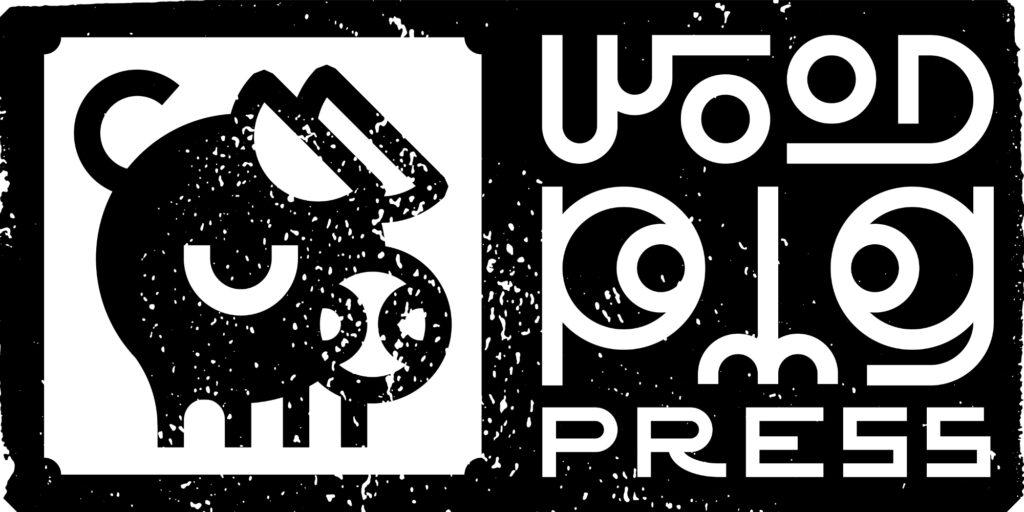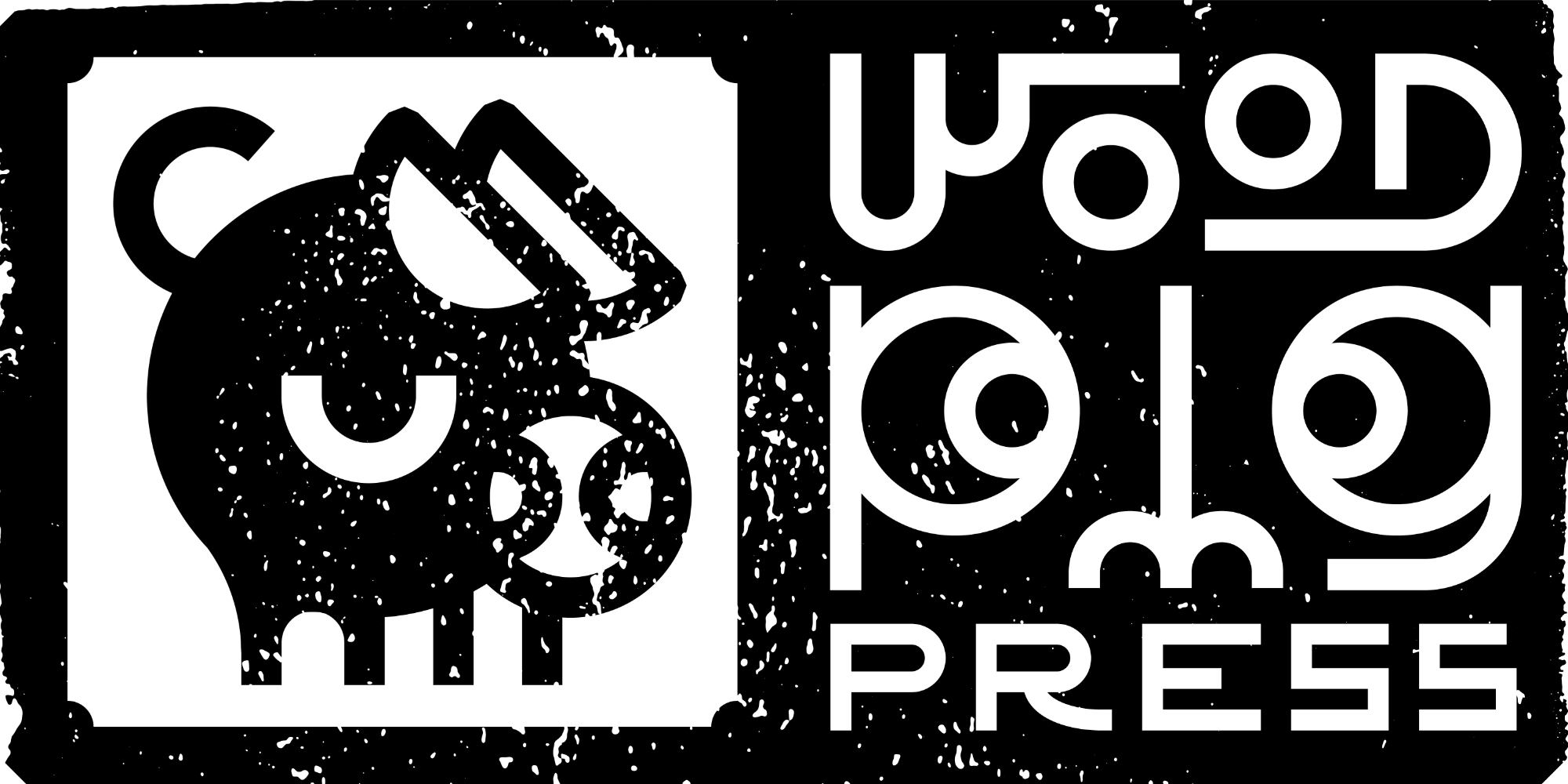
Diary of a Micro-Press, Week 4 – in which I chat to bookseller Tim Batcup
This week I’ve been following through on my overdue promise to make Tidelands 3 available in paperback, which should be available through retailers in the next few days.

Aside from that, I managed to arrange a meeting with Tim Batcup, who runs Cover to Cover, the last independent bookshop in Swansea. I’ve known Tim for years, and he generously made some time available to talk me through the best way for indie authors to approach bookshops, and more generally to explain how the bookshop world works.
Thanks for reading Diary of a Micro-Press! Subscribe for free to receive new posts and support my work.
My first – perhaps slightly impertinent – question concerned how he makes a living. Things are tough for bookshops now, indies especially, with the whole world going digital and everyone buying off Amazon. So, I was sort of imagining a dire scenario where the only way he could keep the lights on was by acting as a money-laundering front for Lithuanian gangsters,1 or sending his children up chimneys,2 but I was heartened to hear that it is all legit and above board, and achieved solely through good-old-fashioned book sales. This is partly due to location: the shop is nicely situated in a gentrified part of the Mumbles area of Swansea, which – just down from the university – is itself a generally affluent and middle class district, all of which sends the right sort of footfall past his door. It’s also due to canny stocking. Since taking over in 2017, he’s learnt what his reading public want, made links with the local community (e.g. helping to run children’s literacy project Storyopolis), and gotten deeply involved in Swansea’s literary scene (e.g. the Dylan Thomas prize) – among many other things.
Tim himself has a professed catholic taste when it comes to the question of what to stock, and will generously give shelf space to “things that look interesting”. That said, Cover to Cover is small, so that shelf space is at a premium. He doesn’t try to compete with Waterstones, Smiths or Tesco’s in terms of the big popular titles, and hardback fiction can be an expensive risk; instead, he aims for slightly more niche and quirky titles mixed in with those he knows will sell. He also gets emails “every single day” from authors (both trad and indie) promoting their books. Obviously, the attitude of bookshop proprietors varies by person, but Tim’s general take on indie books is that, as long as it’s well designed and edited, the email is polite and brief (including ISBN and maybe a sales sheet), and it’s listed on Gardners, then he’ll consider taking a copy.
He also gets a fair number of requests (again, from both indie and trad) to set up book signings. However, the problem with these is that they involve a sort of circularity: the author tends to see them as an opportunity to create some buzz, but how well the event is attended itself relies on there being some buzz in the first place! Which all seems a bit chicken-and-egg – like many things related to the mysterious world of book marketing. So, while in principle he’s not averse to running them, in-person events work best if the author puts in the effort to round up some attendees in advance (even if these are not complete strangers to them…).
So how does he decide which books to stock? Amazon browsing? Google searches? The review pages of the Guardian? Prophetic dreams? Mostly, it’s down to book reps, as emissaries from the Big Five3 descend upon Swansea every three months or so and try to cajole him into stocking their sexy must-have new releases. The same sort of thing happens in W.H. Smiths and other big retailers – the front tables you see there are basically ads paid for by the publishers.4 Well, Tim has much greater control over what he stocks than some of the big book chains, but as much as he’d like to stuff the shelves with Hunter S. Thompson, weird fiction and music books, he must still pay the bills, so he does tend to listen to their advice.
Accommodating these reps also makes good business sense, because the discounts on books from the big publishers tend to be higher. Without going into confidential detail, discounts tend to fall between 40% and 50%, and can be higher for bulk orders. Smaller publishers tend to fall below that threshold, with academic presses often presenting the lowest margins (e.g. 25% or less). So, in terms of discount, if you’re an indie author or a small press and wondering what to do, 40+% is ideal, 30% or more is liveable, and anything below that is only stocked if there’s a high likelihood of a sale (e.g. textbooks for schools and colleges). This is quite tricky for indie authors, most of whom publish through Ingram Spark, for while IS suggests that authors set a 55% discount, a big chunk of this is taken by the distributors – first Ingram Content Group (a separate company), and then Gardners (who Ingram Spark use for UK distribution). After which, there may not be much left for the bookshops themselves.
That said, it still pays to try to get your book listed with Gardners, and many publishers now prefer to distribute through them rather than directly to shops. This is because they’re fast – next day delivery, on many titles – which is vital if bookshops are going to reassure customers that there are convenient alternatives to Amazon.
The other key ingredient in staying afloat is for a bookshop to be able to return unsold stock. Again, Gardners offer the ability to return up to 10% of what the shop purchases quarterly, which eliminates much of the risk from stocking decisions and allows Tim to freshen up his shelves and change his mind on impulse buys.
Publishers are slightly different. Bookshops can return 100% of titles within a window of between 3 and 12 months, but anything after that must stay (though interestingly, Tim resists having a “bargain shelf” for older titles as he feels – rightly, I think – that this devalues books in the customer’s eyes).
And the last thing that helps him are the payment terms. If Tim sells a book in May, he doesn’t have to pay the publisher/distributor until the end of June (something to bear in mind for impatient authors).
Finally, returning to the subject of Gardners, I asked whether a book’s status might act as a deterrent. Gardners have a number of different statuses for books in their catalogue. For those available to purchase, there are three: in stock, extended catalogue, and special order line.

If you’re in stock, then the book will just display the number of titles available; this means that it’s stocked in Gardners’ warehouse, and will be available by next-day delivery. If it’s extended catalogue, then it just means that it’s not in the warehouse, but they’re confident it can be ordered in, and probably won’t take long. However, regarding special order line, I’ve heard some differing explanations of what this means. In my recent interview with Swansea library HQ, they just said that they considered it to mean “available direct from the publisher, but might take longer” – which is what it should mean, according to Gardners, but I’d also heard that some indie authors considered such a status to be the kiss of death. Unfortunately, Tim reinforced this latter interpretation, because he said that he simply wouldn’t chance an order on a book with such a status, because in his experience this meant that it wouldn’t turn up. Which is depressing, because indie authors seem to have little say as to what status their book gets on Gardners, so even if the authors themselves are confident that it can be ordered, it may mean that lots of bookshops/libraries simply don’t order books with this status.5
Another potential issue is if the book is listed as “firm sale” on Gardners. This means that one of the key things that makes Tim’s life easier does not apply to that title: once you’ve bought it, you cannot return it. I know that many indie authors (including myself) don’t list books as returnable through Ingram Spark because of the fear that they may be landed with a load of unsold stock (which must then either be posted back to you at your own expense, or simply destroyed by IS). If the book is a customer order, then this status isn’t a problem for the bookshop – a sale is a sale – but it will probably will be a deal breaker for most bookshops, indie or otherwise, in terms of whether or not they take a chance on your book. That said, it doesn’t seem to bother libraries, who have no need to return books.6
So, what’s the takeaway from all of this?
- You probably won’t get into a bookshop, indie or high-street, unless your book is returnable, and has a decent discount (e.g. 30+%, ideally 40+%).
- Books should be available through Gardners, well designed and edited, and approaches should be via a brief, polite email, which includes the ISBN and (preferably) a sales sheet.
- Don’t push for an in-person event/signing unless you are confident that an unembarrassing minimum number of people will turn up.
- If you’re worried about returns, and you don’t want to take this risk of big orders/destroyed stock through Ingram Spark, then maybe approach likely bookshops individually and try to agree a few copies on a sale-or-return basis. The key here is to establish a personal connection.
- If you want your local bookshop to support you, then it’s not a bad idea to support them (as opposed to Amazon). Most indies are on Bookshop.org, and will get a percentage of sales placed through their Bookshop portal even if they don’t actually stock a particular book, which is great.
Anyway, that’s it for this week. Next week I’ll be looking at possible funding opportunities via the Books Council of Wales.
My thanks to Tim Batcup for letting me pick his brains. You can check out Cover to Cover here.
- I don’t even know if that’s a thing. ↩︎
- This may seem like a dated reference, but I have it on good authority that coal and wood fires are back on the rise, so they are, Mary Popp’ns! ↩︎
- Namely, Penguin Random House, Hachette, HarperCollins, Simon & Schuster, and Macmillan. ↩︎
- This used to be the case with Waterstones, but paid book placement was abandoned after James Daunt took over in 2011, and now, “Waterstones does not charge publishers for placement. Our bookshops curate and tailor their offer to their customers’ interests and placement is based on local demand.” [email correspondence with Waterstones PR] Thanks to John Self for pointing this out. The above article has been amended to reflect this. ↩︎
- I’ll come back to this topic, and the subject of distribution in general, in a future post. ↩︎
- They just sell them off on the bargain book cart! ↩︎
